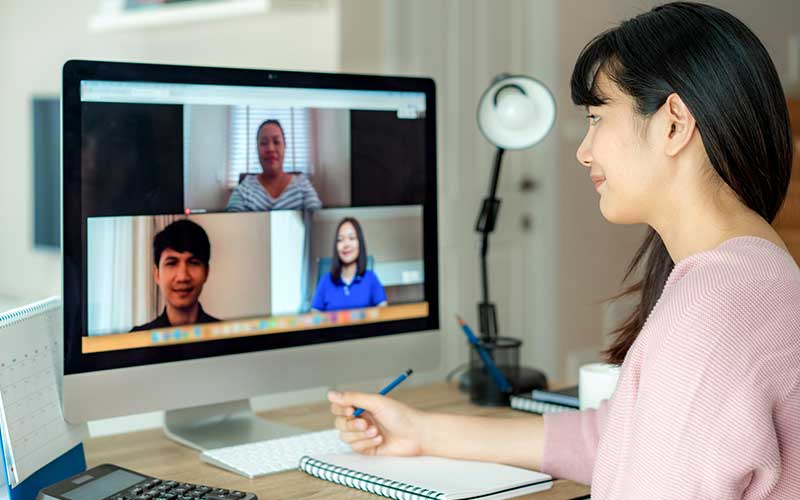The world is slowly starting to open up as many economies pass their COVID-19 peak. But we’ve been through a tough time. Compared to last year, Chinese GDP fell by 6.8% in the first quarter, triggering a fall in GDP of 1.3% year-on-year globally. In America, the unemployment rate jumped to 14.7% in April, and the number of employees on payrolls fell by 20.5 million.1 Figures like these haven’t been seen since the 1930s. Some say the worst is over. On Wall Street, investors are betting on a rapid rebound in employment, output and profits. The Down Jones Index climbed 30% over April and May 2020. But this is optimistic. In China, with many still fearful, the rebound has been slow and partial.
Consumer spending has taken a hit, and 44% of Americans are worried about salary cuts, according to Morgan Stanley.2 Many consumers once interested in luxury purchases now are paying down debt or attempting to recoup some of the income lost at the height of the crisis. Many businesses and people will go bankrupt before the dust settles. Investment will be put on hold across industries, and according to Moody’s Analytics, will be at lower levels than that seen in the aftermath of the 2008 financial crisis.3
The 90% economy
The world is reemerging, but it won’t be the same. The Chinese economy, which climbed its way out of lockdown before the rest, offers a marker for how things will be going forward. Slower, thriftier and less care-free. The Economist, a newspaper, says that 10% of GDP will be lost as social distancing continues in the mid-term. This will create a “90% economy” around the world.
People will stick with what they know and will be afraid of what they don’t. Buying fresh, healthy produce, especially from “feel good” artisans, will become more important, and consumers will nest at home with people with whom they have “a stable and enduring emotional link,” something the Italian government has called “congiunti.”
What this outlook means for consumer packaged goods firms is tricky to characterize going forward. Many have done well in these perilous times, even as spending on non-essential goods dropped by 50% in April.4 For those regions emerging from lock-down, retail will re-open with “safe stores”, and there will be a very gradual easing of social distancing by risk groups. Lower spending, more saving, rising hygiene expectations and a continued increase in online spending all loom large. In countries that are already managing in the 90% economy, CPG consumers are more price sensitive, show higher digital engagement and care more about wellness and hygiene.5
Customers will save more and there will be a continued increase in online spending
If there are any lessons to be learned from the financial crisis of 2008, it’s that consumer confidence returned in a phased recovery, with Chinese consumers back to prerecession behavior as late as 2017. In the long years after the recession, people ate out less, cut back on nonessentials (two-thirds of U.S. shoppers cut back on luxury goods, while one-third cut back on cosmetics) and bought more products at a discount. Health-conscious private labels were the order of the day, as were cheap brands that sold their wares in value retailers.6
Such trends will play out after this recession too. If they play it well, CPG firms may hold onto at least six percent of the online marketplace going forward. Much of this will be driven by those in older generations who have set up accounts with third-party e-commerce providers and grocery outlets.7 And physical hygiene will be the order of the day for both consumers and employees who work across the supply chain.
The way ahead for CPG firms
These undertones should be factored in to CPG strategy in the next year and a half. Brands will have to reassess their manufacturing processes, the way they package goods, and will do well to double down on wellness and cleanliness in communications. They must also increase their social media presence, nimbly connecting with their communities to show they care about people who have been hard hit. For those that haven’t made a foray into environmental, social and governance policy, this is the perfect time to make a start.
During the banking crisis of 2008, three quarters of consumers agreed that “corporations should operate in a way that aligns with society’s interests, even if that means sacrificing shareholder value.”8 Sensitivity will be key, however. People appreciate brands telling them how they will meet the need of the hour, but they also need to be reassured that these same firms are not using the pandemic as a profit-making exercise.9
E-commerce is another avenue CPG firms should pursue, moving up the value chain to work closely with grocers and other commercial outlets. This means having the right processes, the right talent and the right customer segmentation strategy in place. It also means having a clear and consistent customer journey across both online and offline touchpoints. CPG relationships with third-party e-commerce partners should become deeper, with more data exchange or shared warehousing so that new demand spikes can be factored into logistics and product allocation.
Across the board, supply chains will need to become more resilient to both supply and demand shocks. Software-as-a-service solutions from SAP and Oracle can be used to manage inventory and allocations and to predict outages if a second wave of the pandemic occurs.
“Safety-first” will be the new mantra for firms looking to bolster their workforce in both manufacturing plants and offices. One leading CPG company introduced staggered working hours, plexiglass barriers between workstations and stringent sanitization protocols in its workplaces.10 This will be the new normal until a vaccine appears, and other firms should do the same.
Firms can start planning around niche, dedicated offerings based around new buying patterns
CPG firms should also reassess which goods they want to concentrate on selling, and how. Rebuilding demand for products that have fared badly during the downturn will be important, even as buffers are put in place for essential and popular goods. Once firms know more about consumer behavior in the 90% economy, they can start planning around niche, dedicated offerings that capture economies of scale and new buying patterns.
With fewer people going to popular gatherings and other entertainment venues, demand for cosmetics will suffer in the long term. Social media will be important to entice the younger generation to buy these sorts of health and beauty goods, taking care to reposition premium offerings and prioritize cheaper brands. Data must be captured and managed well (a central data repository should be constructed) so that brands can quickly market brands at the right price point and to the right customer. This will lead to hyper-personalization, with a successful and robust offline-to-online presence mandatory for visionary firms.
One way of keeping a brand top of mind is to reassure customers of the provenance of their products. “Direct to consumer” models work well here. Not only do they allow CPG firms to get closer to the customer, but produce more and richer data around each offering throughout the duration of a purchase. This business model allows heightened levels of customer service, along with additional insights to upsell and cross-sell fledgling brands. To get a foot in the door quickly, visionary firms must offer direct to consumer mobile commerce operations and onboard customers through subscriptions. On a more macro level, they should create a mesh of physical stores closer to homes, and use technology to branch out into ever new formats and channels.11 Within all this strategic calculus, firms that play it right can also merge or acquire promising players in their distribution networks. This will call for constant market vigilance.
The place of technology
As the market becomes tougher, and digital more relevant, now is the time for CPG firms to push their various digital transformation initiatives to full completion. Machine learning and analytics are a good place to start. Using these tested technologies to understand consumer behavior, demographics and buying patterns in next-to-real time will pay off handsomely. SaaS solutions can be used to build stronger supply chains as well as trust and transparency with partners and customers. Digital learning, governance and collaboration platforms will become highly necessary as remote working plays out for employees in the long haul. With this increased online presence, tougher cybersecurity measures, including two-factor authentication and safe cloud data storage, will need to be introduced.
Technology can be used to understand customer behavior, demographics and buying patterns in next-to-real time
Though in the short term the onus will be on getting closer to the customer, safeguarding employee health and cutting costs, CPG firms also can start thinking about putting their employees at the center of a hyperproductive business model. As we wrote in a recent article on the purely cognitive supply chain, the CPG firm of the future will be a “live enterprise,” using a digital brain (based on artificial intelligence) to sense and respond to market and business data in real time. Everything from predicting what customers will buy to planning how to meet spikes in demand will be guided automatically and proactively.
“The future influences the present just as much as the past,” said Friedrich Nietzsche. The economy that emerges from this pandemic will be very different from anything we’ve ever experienced. While a live enterprise is the zenith for firms of the future, CPG firms still can make emphatic decisions across workforce, customers and operations to ensure their balance sheet grows, even as it rains.
References
- The Most Alarming Thing About the Worst Jobs Report in History, John Cassidy, May 8, 2020, The New Yorker.
- The 90% Economy That Lockdowns Will Leave Behind, April 30, 2020, The Economist.
- Ibid.
- How Consumer-Goods Companies Can Prepare for the Next Normal, April 17, 2020, McKinsey & Company
- Ibid.
- Ibid.
- Ibid.
- Trust Transformed: Results of the 2011 Edelman Trust Barometer, Richard Edelman, Jan. 25, 2011, Edelman.
- Brands in a Pandemic World: Insights From Kantar’s COVID-19 Barometer, March 27, 2020, WARC.
- Conagra Brands’ Response to COVID-19, April 23, 2020, Conagra Brands.
- Overcoming the Existential Crisis in Consumer Goods, March 7, 2020, Bain & Company.




